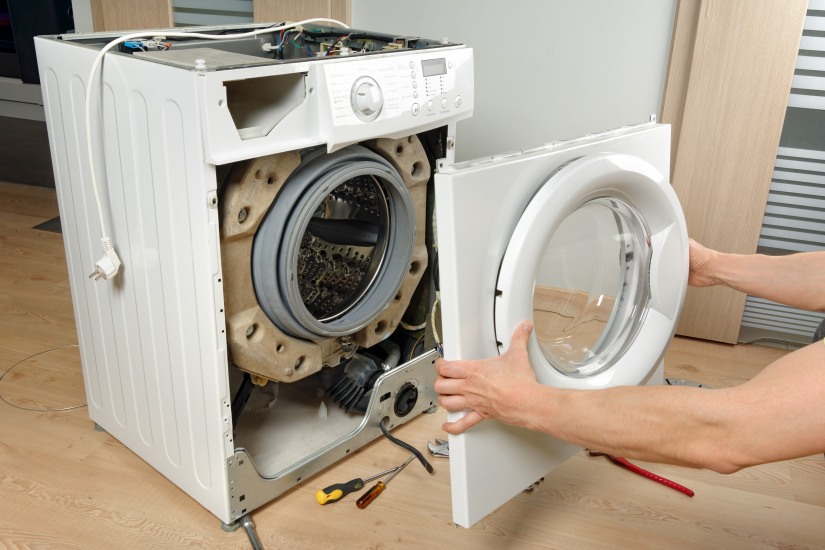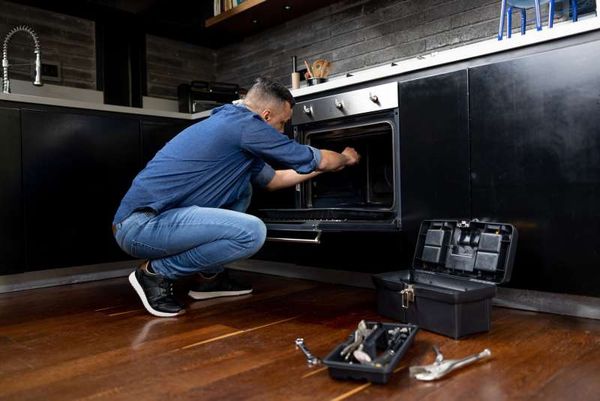The Ultimate Guide to Understanding Device Repair Service in the house
When your fridge quits cooling or your oven declines to heat, it can feel overwhelming. Comprehending home appliance repair service at home can conserve you money and time. You'll learn to acknowledge signs and symptoms, make use of necessary tools, and comply with an organized troubleshooting process. Prior to you start, there are essential safety preventative measures you need to take right into account. What are the most common problems, and how can you fix them? Let's discover the fundamentals.
Typical Device Issues and Their Signs
When your devices begin breaking down, it's essential to recognize the indicators early on. Disregarding them can bring about larger issues and expensive repairs. If your fridge isn't cooling down correctly, you may discover cozy spots or condensation developing. This might show a failing compressor or an obstructed vent.Your dish washer might reveal troubles with unclean dishes or uncommon noises during cycles. If you listen to grinding or clanking, it's time to investigate.A washing maker that will not spin or drain can leave you with soaked washing, suggesting a clogged drain or a malfunctioning pump.Lastly, if your oven's temperature level appears off or it takes for life to preheat, you could be dealing with a malfunctioning thermostat. By remaining alert to these signs and symptoms, you can address problems before they rise right into major repair services.
Important Tools for Home Appliance Repair Work
When you're taking on device repair work at home, having the right tools is crucial. Fundamental hand tools like screwdrivers and pliers will certainly help you disassemble and repair various home appliances, while electric testing devices guarantee you're functioning safely with circuitry. Allow's discuss what you require to obtain started on your repair service journey.
Basic Hand Tools
Having the right tools is vital for effective device repair service in the house. Beginning with a reliable screwdriver collection, consisting of both flathead and Phillips kinds, as screws are common in device setting up. Pliers are also important; they aid with gripping, turning, and cutting cables or tiny elements. A set of needle-nose pliers can get to difficult situations quickly. You'll need a great flexible wrench for tightening up or loosening up nuts and bolts. An utility knife is convenient for puncturing product packaging or insulation. Don't fail to remember a strong workbench or surface to safely arrange your tools and parts. With these standard hand tools, you'll be well-prepared to deal with most home appliance fixings that come your way.
Electrical Screening Tools
Alongside standard hand tools, electric screening tools play an important duty in appliance fixing. These devices aid you detect electric concerns and warranty devices operate securely. A multimeter is crucial; it gauges voltage, existing, and resistance, enabling you to pinpoint troubles swiftly. A non-contact voltage tester is one more must-have, letting you identify live wires without making straight call, improving your safety. Clamp meters are wonderful for determining present flow in cables without detaching them, saving you time and initiative. Additionally, circuit testers can quickly check if outlets are working correctly. By using these gadgets, you'll enhance your troubleshooting procedure and improve your repair work abilities, making appliance upkeep a whole lot much easier.
Step-by-Step Overview to Diagnosing Home Appliance Issues
When your device acts up, it can be discouraging, yet identifying the problem does not have to be overwhelming. You'll discover to identify typical problems and use effective troubleshooting methods. Allow's go through the actions to obtain your device back in working order.
Usual Home Appliance Troubles

Troubleshooting Techniques Described

Repairing Major Kitchen Appliances: A Closer Look
Have you ever wondered just how to take on usual problems with your cooking area appliances? Repairing major kitchen devices like refrigerators, stoves, and dish washers can be easier than you think. Begin by identifying the trouble-- whether it's a fridge not cooling down or a stove that will not heat. Commonly, an easy reset or inspecting the source of power can resolve the issue.For refrigerators, tidy the condenser coils and examine the door seals. If your stove's not heating, evaluate the home heating component and thermostat. Dishwashers may just need a tidy filter or a reset to get them back at work. Always disconnect the device before diving into repair work to assure your safety.Don' t forget to consult the customer handbook for specific repairing pointers connected to your version. With a bit of patience and the right tools, you can with confidence tackle device fixings and save cash while doing so!

Fixing Laundry Appliances: Tips and Techniques
When your washing appliances begin breaking down, it can really feel frustrating, however troubleshooting them doesn't need to be a hassle. Start by inspecting the power supply. Validate the home appliance is plugged in and the electrical outlet is operating. Next, examine the door or cover button; a damaged button can avoid the machine from operating.For washing machines, if it's not rotating, examine for unbalanced lots. Redistributing the clothing may address the concern. If your dryer isn't heating, clean the lint filter and examine the air vent for blockages.Listen for uncommon noises; they can suggest a problem. If your device is leaking, inspect the hoses for splits or loose links. Paper any mistake codes displayed on digital screens, as they can guide you in determining the problem. Consult the customer manual for details troubleshooting ideas related to your design.
Safety Preventative Measures to Take Throughout Services
Before you start any type of device repairs, it's vital to you can try these out focus on security to avoid mishaps or injuries. Initially, disconnect the home appliance or turn off the breaker to guarantee no power reaches it while you function. Usage insulated tools to minimize the risk of electric shock. Wear safety goggles and gloves to shield on your own from sharp sides or debris (Dependable Refrigeration & Appliance Repair Service Dryer repair near me).Make particular your office is clean and well-lit, so you can see what you're doing. Keep kids and family pets far from the area to avoid distractions and potential dangers. If you're dealing with gas devices, be added mindful; check for leaks prior to proceeding.Take your time, and do not rush through fixings. If you feel unpredictable concerning any step, it's far better to stop briefly and study than to think. Complying with these safety measures will certainly aid create a much safer atmosphere for your DIY appliance repair service task
When to Call an Expert for Assistance
Exactly how do you know if it's time to call a specialist for device repair services? If you've tried fundamental troubleshooting without success, it's a clear indication. If your home appliance still will not start or shows uncommon noises after resetting it, don't be reluctant to seek specialist help.When you observe leaks, smoke, or shedding scents, prioritize safety and security and call a pro quickly. These issues can cause more considerable damages or position dangers to your home.Also, if your device is under warranty, speaking to a professional is usually the very best route. They can assure that repairs will not nullify your service warranty, conserving you money in the long run.Finally, if you're check my reference unsure or uncomfortable with complex fixings, it's smart to leave it to the experts. Keep in mind, tackling challenging concerns without the appropriate proficiency can result in pricey mistakes. Trust a professional when doubtful!
Regularly Asked Questions
Just How Can I Protect Against Appliance Issues in the Future?
To avoid appliance issues in the future, you must carry out normal upkeep, look for wear and tear, clean filters, and avoid overloading. Staying proactive will certainly aid prolong their life-span and keep them running smoothly.
What Are one of the most Typical Do It Yourself Device Repair Mistakes?
You could overlook security preventative measures, miss troubleshooting actions, or make use of incorrect tools when attempting DIY home appliance repair services. Rushing the process or neglecting manufacturer guidelines can result in even more substantial issues and pricey blunders. Stay client and educated!
How Do I Know if a Part Needs Replacement?
You can inform if a part needs substitute by checking for uncommon sounds, leakages, or irregular efficiency. If the home appliance battles to operate properly or shows visible damage, it's likely time for a substitute.
Can I Utilize Generic Components for Device Services?
Yes, you can use common components for home appliance repairs, but ascertain they work - Kenmore Dryer Repair Oro Valley Dependable Refrigeration & Appliance Repair Service. Generic components could save you money, but they could affect performance or long life, so evaluate your alternatives thoroughly before deciding
What Service Warranties Cover Appliance Services?
The majority of appliance warranties cover repair work for manufacturing defects, yet they typically omit damages from abuse. Inspect your guarantee terms very carefully, as some could require using certified service technicians and original parts for coverage to stay legitimate.